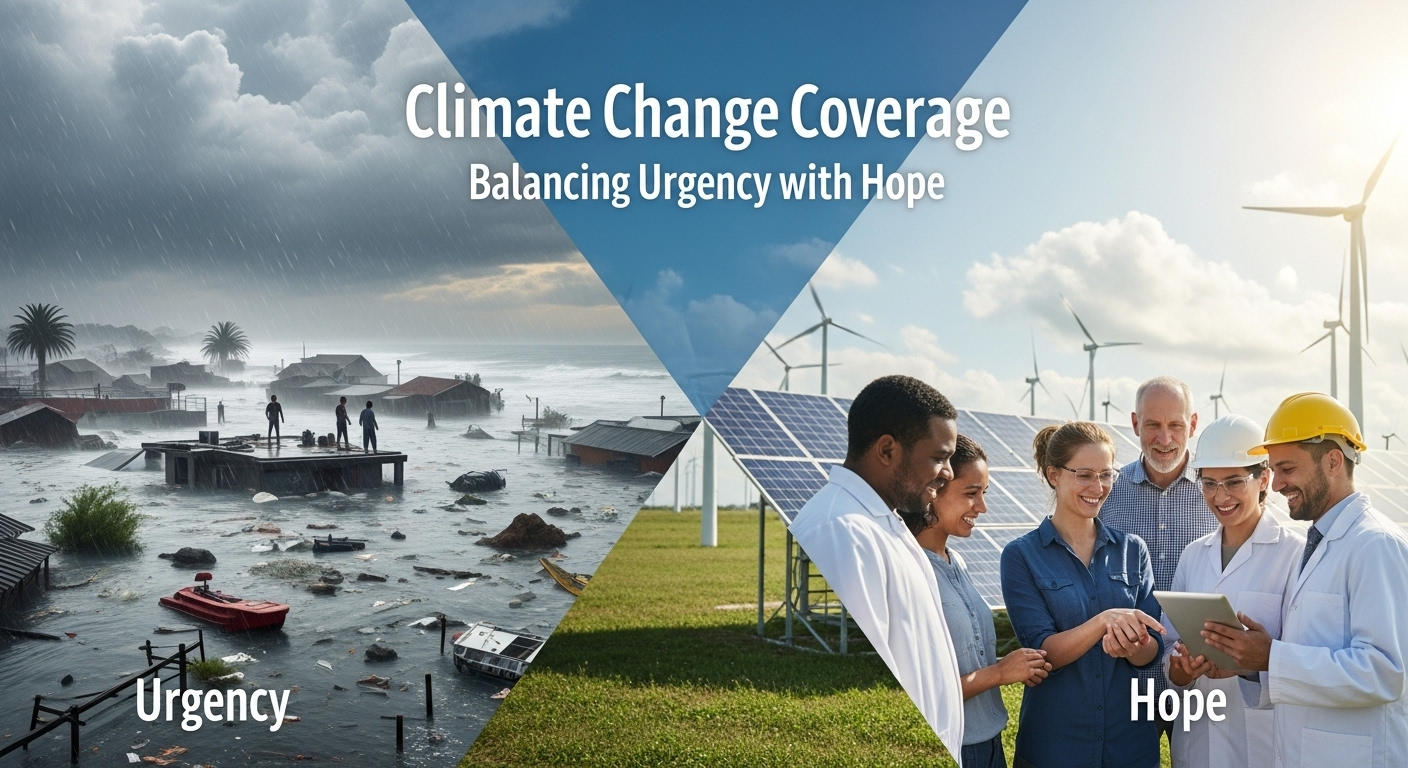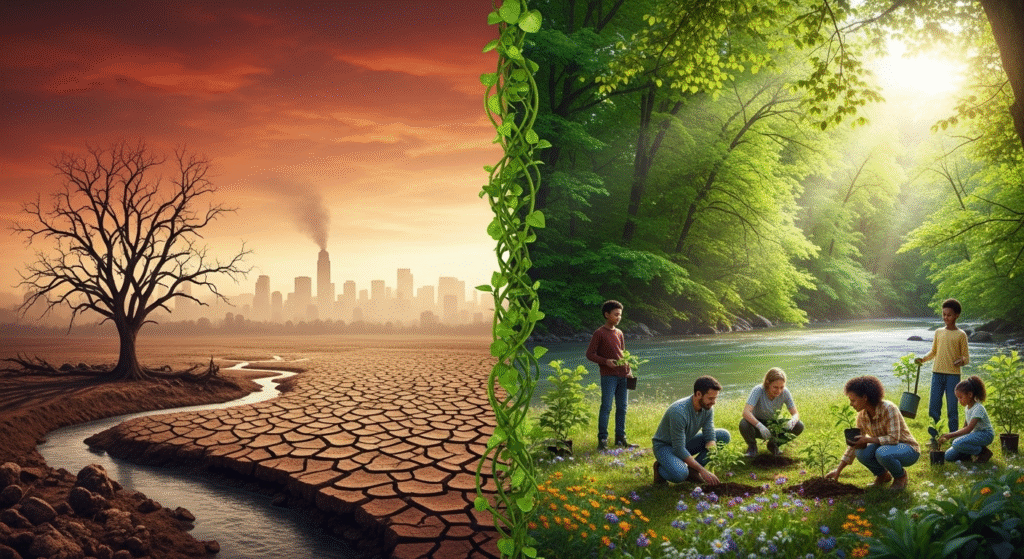Okay, let’s talk climate change. But not in the way you’re probably used to. I’m so tired of the doom and gloom. Yes, the situation is serious – deadly serious, in fact. We’re seeing unprecedented heatwaves, more intense storms, and rising sea levels. I mean, have you SEEN the news lately? It’s terrifying! But overwhelming people with negative information just leads to paralysis. It’s like being told you need to run a marathon tomorrow with zero training. You’d probably just stay on the couch, right?
Here’s the thing: fear is a terrible motivator long-term. It might get your attention initially, but it quickly leads to burnout and apathy. We need something more sustainable, something that acknowledges the severity of the challenge while inspiring action. That’s the tightrope we need to walk when it comes to climate change coverage: balancing urgency with hope.
Think about it this way: if every article you read about your favorite sports team was about their inevitable failure, would you still be a fan? Probably not! You need to hear about the victories, the close calls, the moments of brilliance – even amidst the losses. Same with climate change. We need to hear about the innovative solutions, the successful initiatives, and the progress being made. It’s happening! It really is!
Why Positive Climate Stories Matter

It’s easy to dismiss positive climate stories as “greenwashing” or naive optimism. And you know what? Sometimes, that’s exactly what they are. We need to be critical thinkers and not blindly accept everything we read. But the absence of positive stories is a problem, too. For one thing, it contributes to a sense of hopelessness that actively discourages people from getting involved. Why bother recycling if the planet is doomed anyway?
Positive stories – genuine positive stories – can be incredibly empowering. They show us that change is possible, that solutions exist, and that our actions can make a difference. They inspire innovation by highlighting what’s working, and they create a sense of collective momentum. And speaking of momentum, check out strategy games, where every decision counts toward the big win.
Here’s the thing, though. And I’ve got to admit, this part fascinates me. Positive stories don’t have to be huge, global victories. They can be small, local initiatives – a community garden, a successful energy efficiency program, a local business switching to sustainable practices. These stories are relatable, tangible, and they show us that even small actions can have a significant impact. They also foster a sense of community and shared purpose. It’s easy to feel overwhelmed by the scale of the climate crisis, but these local stories remind us that we’re not alone.
The Role of Media in Shaping the Narrative
I initially thought the media was simply reporting what was happening. And sometimes they are. Actually, that’s not quite right. The media doesn’t just report on climate change – it shapes the narrative. The words they use, the stories they choose to tell, and the way they frame the issues all have a profound impact on public perception.
That’s why it’s so crucial for journalists and media outlets to get the balance right. They need to accurately convey the urgency of the climate crisis without resorting to fear-mongering. They need to highlight the challenges and the solutions. And they need to amplify the voices of those who are working on the front lines of climate action.
But it’s not just up to the media. As consumers of information, we also have a responsibility to seek out balanced coverage, to be critical of the stories we read, and to support media outlets that are committed to responsible climate reporting. You might be wondering, how? Well, let me tell you. Seeking diverse sources, fact-checking claims, and engaging in constructive dialogue are all important steps. We also need to be aware of our own biases and how they might be influencing our perception of the issues.
And, of course, we need to be willing to have tough conversations – with our friends, our family, and our communities. Climate change is a complex issue with no easy answers, and it’s important to create spaces where people can share their concerns, ask questions, and learn from each other.
Finding Hope in Action: What Can We Do?
So, how do we find hope amidst all the doom and gloom? I keep coming back to this point because it’s crucial. By focusing on action. The more we do – the more we learn, the more we advocate, the more we support – the more hopeful we become. Let’s dive a bit deeper:
- Individual Actions: Reduce your carbon footprint, support sustainable businesses, and advocate for climate-friendly policies.
- Community Engagement: Join a local environmental group, volunteer for a climate action project, or start your own initiative.
- Political Advocacy: Contact your elected officials, support candidates who prioritize climate action, and participate in peaceful protests and demonstrations.
And one more thing – don’t underestimate the power of storytelling. Share your own experiences, celebrate your successes, and inspire others to take action. Every little bit counts. And it is vital to improving user experience, that’s why we should all focus on this part!
Let me try to explain this more clearly: Action isn’t just about achieving specific goals; it’s about building momentum, fostering hope, and creating a sense of collective efficacy. It’s about reminding ourselves that we’re not powerless in the face of the climate crisis – that we have the agency to create a better future.
FAQ: Climate Change Coverage
Why do I feel so overwhelmed by climate change news?
That’s completely understandable! The constant barrage of negative information can be incredibly overwhelming. It’s important to take breaks, limit your exposure to the news, and focus on what you can control in your own life. Finding a community of like-minded individuals can also be a huge help.
How do I know if a climate change story is credible?
Good question! Look for stories that are based on scientific evidence, that cite reputable sources, and that present a balanced perspective. Be wary of sensational headlines, unsubstantiated claims, and biased reporting. Also, consider the source itself. Is it a well-established media outlet with a track record of accuracy, or is it a partisan website with a clear agenda?
What can I do if I disagree with how climate change is being covered?
Speak up! Write a letter to the editor, contact the media outlet directly, or share your concerns on social media. Engage in constructive dialogue and offer alternative perspectives. Remember, the media is there to serve the public, and they’re more likely to respond if they hear from their audience.
How can climate change coverage balance urgency with hope effectively?
By acknowledging the seriousness of the climate crisis while also highlighting the solutions and progress being made. By focusing on stories of innovation, resilience, and community action. And by amplifying the voices of those who are working on the front lines of climate action. It’s not about sugarcoating the truth; it’s about offering a more complete and nuanced picture of the issues.
And if you need a small break from climate coverage, read this about vcf console – there are lots of important things out there!
Climate change coverage: Balancing Urgency with Hope is possible. Let’s strive for it!



